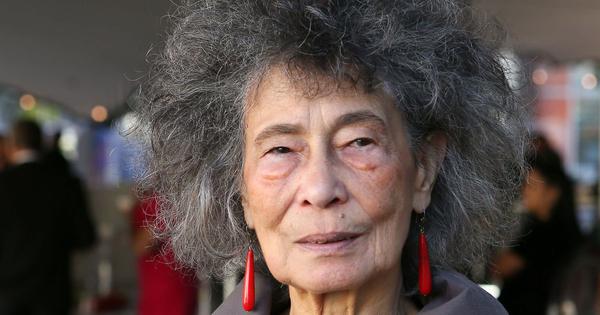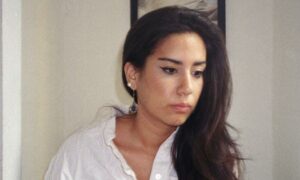
In December 2014, the first Literary Activism symposium was held in Jadavpur University in Calcutta. Conceptualised by the writer Amit Chaudhuri, this series of interventions into the literary culture of our times recently celebrated its tenth year of annual symposia. Several writers and scholars spoke at the inaugural symposia, including two figures now deceased – Dubravka Ugrešić and Swapan Chakravarty. Others, besides Chaudhuri, included Tim Parks, Laetitia Zechhini, Rosinka Chaudhuri, Peter McDonald, Jamie McKendrick, Jon Cook, David Graham, and me.
A moving talk, later published as “The Critic as Lover: Literary Activism and the Academy”, by the South African scholar Derek Attridge, revealed powerful critical intervention and literary championship that was identified as literary activism. Attridge spoke about his 1979 experience of reading, at the recommendation of a South African friend at Berkeley, a novel called Dusklands by a new writer called JM Coetzee. Immediately, Attridge felt that it was “something quite unlike any South African fiction.” He started to read all of Coetzee’s subsequent novels as they came out, and went on to recommend that the University of Strathclyde, where he was a professor, offer Coetzee an honorary degree. “Somewhat to our surprise,” Attridge recalled, “he accepted.” Attridge’s continual championship of Coetzee, including much writing on him, now ran parallel to the global accolades Coetzee started to receive, including two Booker Prizes and eventually the Nobel Prize in Literature in 2003.
A new voice
But the main subject of that talk was the work of another South African writer who had settled in Scotland. Zoë Wicomb, who, unlike the white Coetzee, grew up as “Coloured” under the legalised racism of the apartheid regime, which reserved that term for people of mixed racial heritage. Increasingly moved by Wicomb’s short stories and novels. Attridge organised several conferences about her and put together a volume of essays on her work.
In 2012, on the invitation from the committee for a new literary award instituted by Yale University, the Windham-Campbell Prize, which came with a grant of $150,000, Attridge nominated Wicomb’s name under the category for “a writer whose achievements hadn’t been adequately recognised.” Wicomb became the inaugural winner of the Prize in that category, and was, since then, increasingly recognised in literary and academic circles worldwide.
Even so, her aversion to the literary “marketplace”, which made her stay away from literary agents and remain with small publishers all her life, kept her far less known than what she should have been, and certainly more obscure than the two white South African Nobel Laureates in literature – Coetzee and Nadine Gordimer.
This narrative about Wicomb at the 2014 symposium took me back to the past. In 2001, my first course as a PhD student at Rutgers University was one with Derek Attridge – a course on the work of JM Coetzee, whose 1999 novel, Disgrace, was then drawing out a storm of responses, given its sensitive theme of sexual violation in academia. As I started working with Attridge, I became increasingly drawn to South African literature in English. It was he who introduced me to the two remarkable books Zoë Wicomb had published till that point – a collection of linked short stories, You Can’t Get Lost in Cape Town, and a novel, David’s Story.
I was enthralled by the magical, almost polemical evocation of quotidian life in rural Namaqualand and Cape Town in the autobiographically inspired collection, You Can’t Get Lost in Cape Town. Together, the stories made up something of a Bildungsroman, a coming-of-age novel, or more precisely, a Kuntslerroman, the story of the coming of age of an artist, as the stories have striking metafictional qualities that reflected the process of their own writing.
But what was radically different and brave about these stories was that they moved away from the mainstream preoccupation with the grand drama of apartheid oppression and the spectacle of resistance against it. Such spectacle and drama was the subject of the stridently polemical South African “protest literature.” A strain of discontent with the loudness and the stridence of cultural representation of late-apartheid South Africa had already appeared in the nuanced movement that called itself “the rediscovery of the ordinary.” The chief architect of this movement was the black South African writer and educationist Njabulo Ndebele, whose memorable essay collection, The Rediscovery of the Ordinary, lays out a sensitive and deeply thought-out set of arguments about what was lost when writers and artists were solely preoccupied by the loud and the garish. Even in the midst of one of the most barbarically oppressive regimes in the modern world, Ndebele pointed out, subtle and intricate acts of racism occurred in less visible spaces, often outside the glare of the public sphere, through invisible ideologies, in daily life – missing out on which was as much a political loss as it was aesthetic.
A new politics
I have not found a writer more finely attuned to the subtle aesthetics of apartheid and post-apartheid racial identities in South Africa than Zoë Wicomb. This not only felt like her innate aesthetic as a writer who, throughout her life, chose to live away from the noise and glare of the literary marketplace, but also signalled her disavowal of mainstream anti-apartheid resistance led by male black figures. As a woman of mixed racial heritage, she pointed out the racist and masculinist nature of this resistance, memorably, for instance, in her short story, “Behind the Bougainville”. Her autobiographically constructed narrator-protagonist, Frieda Shenton, gains hesitant, tentative access, first as a young child and then as a teenager and a young girl, to a domestic everyday that lies far from the public glare and drama of apartheid and its brutalities, and yet is inlaid with subtle carvings of racism and racial anxiety in a deeply unequal society. I learned much about the submerged sense of trauma and anxiety that can plague a child under calm surfaces, something that would come to shape my own making as a novelist.
I tried to bring these aspects of Wicomb’s collection into a book I wrote about the representation of banality and boredom in fiction, Prose of the World. When I shared the book with Wicomb, then retired from the University of Strathclyde, we began a warm correspondence, which led to her reading of a manuscript I had recently completed, about a young boy’s destructive relationship with his mother’s life as a theatre actress. Wicomb turned out to be one of the most sensitive readers of the manuscript of the novel, which was eventually published in India as The Firebird and as Play House in the US. Neither my sense of the child in literature, nor of the immense aesthetic possibilities of domestic quotidian life has been the same since my encounter with the work of Zoë Wicomb.
Her 2000 novel, David’s Story, was a more ambitious exercise in an experimental, postmodernist historiography of race relations in South Africa. I was impressed by its scale and achievement, but I was even more moved by her 2006 novel, Playing in the Light, which, as its title hints, narrates a striking racial epiphany on the part of a leading character in post-apartheid South Africa. It was the kind of realisation that points to the absurdity of bureaucratic classification of race in the apartheid regime that can only be compared with existential fiction and the theatre of the absurd.
Wicomb wore the dual identity of a literary scholar and a fiction writer in the academy in that memorable way that makes their distinction almost meaningless. The racial and gendered exploitations of apartheid came together in seamless ways in her work and shaped some of her most memorable essays, including “Shame and Identity: The Case of the Coloured in South Africa”, about Saartjie Baartman, an enslaved African woman who was displayed in a mobile exhibition through Europe by racist colonisers under the name “Hottentot Venus”. Wicomb’s collection of essays, Race, Nation, Translation, put together by Andre Van der Vlies, is as deeply scholarly as it is ethically and politically conscientious.
Warm stories about Wicomb caressed me during my time as a Fellow at the Stellenbosch Institute for Advanced Study, in the historic city of Stellenbosch, where the Dutch Reformed Church had made deep inroads, offering a Biblical morality to justify discrimination against darker races. Wicomb had spent time at the Institute a couple of years before I went there, and the staff at the institute was fond of recalling her mellow presence. The daily lunches at the institute were so exquisitely curated – she used to say – that they should have organised hammocks instead of offices so that the fellows could take their post-lunch naps in them.
That is how I still see her, content, smiling, slowly swaying in a hammock in the mellow afternoon sun of the Western Cape, etching a quiet rhythm of deceptive regularity. The electric sparks of a language-shaped reality are all around her, but visible only to those who really want to see them.
Saikat Majumdar is the author of five novels, including The Firebird, The Scent of God, and most recently, The Remains of the Body.
📰 Crime Today News is proudly sponsored by DRYFRUIT & CO – A Brand by eFabby Global LLC
Design & Developed by Yes Mom Hosting






